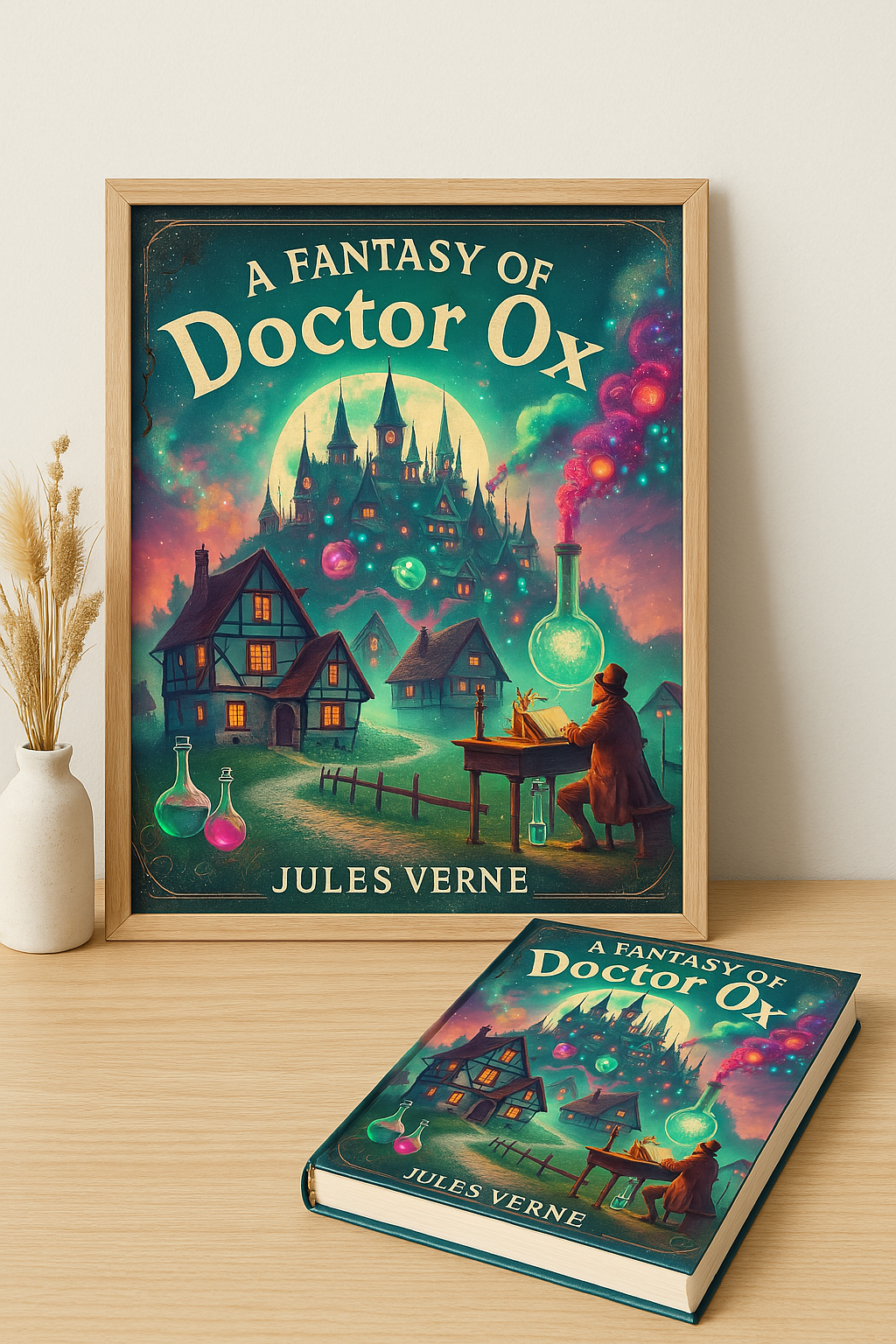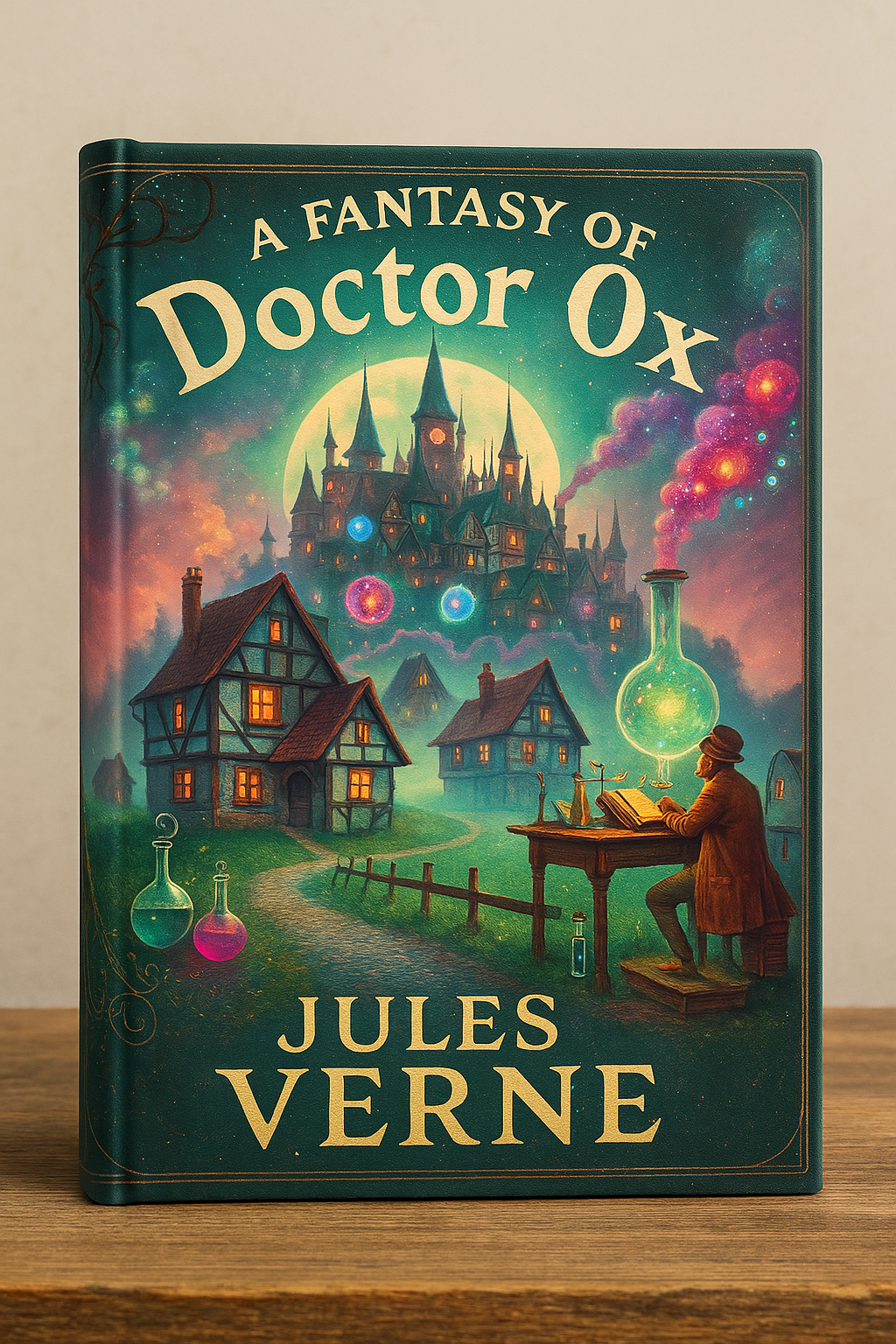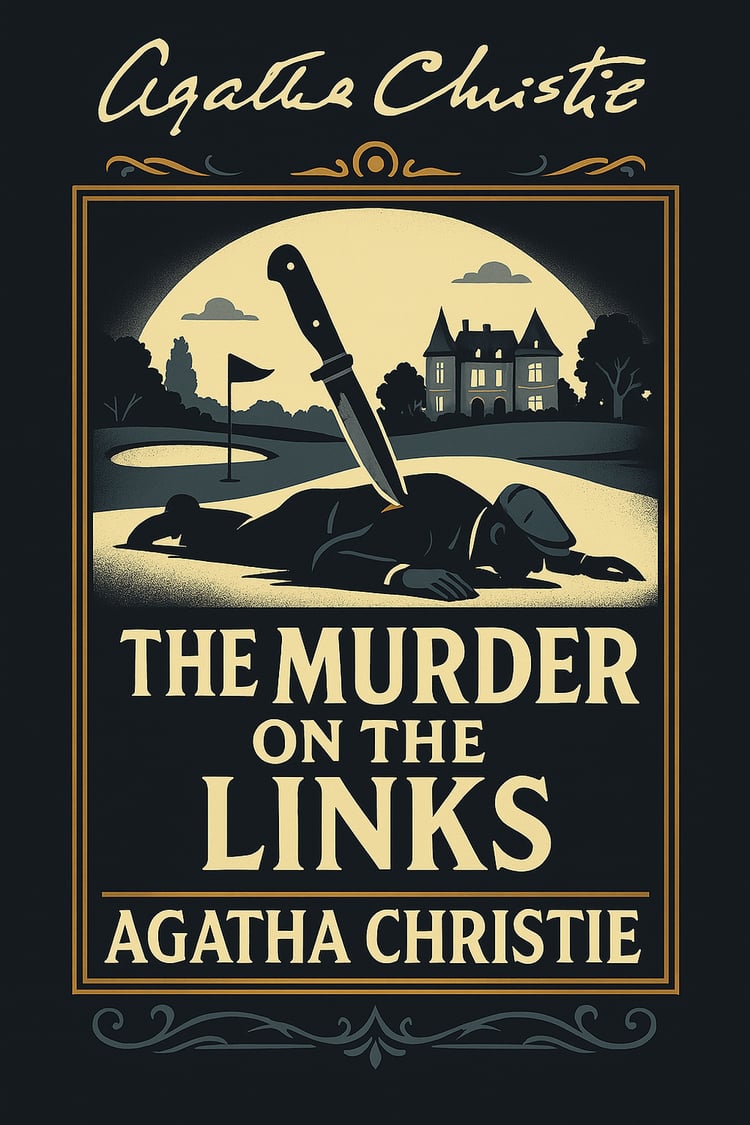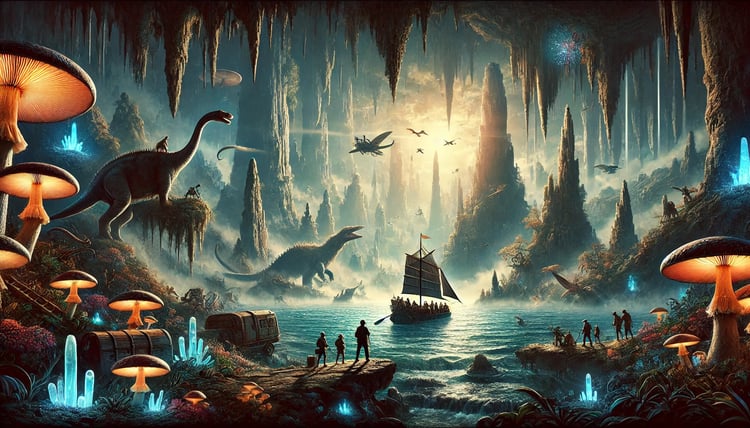A Fantasy of Doctor Ox (eBook)
"A Fantasy of Doctor Ox" is a novella by Jules Verne, originally published in French as "Une fantaisie du docteur Ox" in 1872. The story stands out in Verne's oeuvre because it is more of a satirical fantasy than a science fiction tale. It combines humor, social commentary, and a touch of absurdity, offering a different flavor from his more adventure-focused works like Around the World in Eighty Days or Twenty Thousand Leagues Under the Sea.
Plot Summary:
The story is set in the fictional Flemish town of Quiquendone, a place characterized by its extremely calm, unhurried, and peaceful citizens. Life in Quiquendone is so slow-paced that even minor decisions can take years.
Dr. Ox, a mysterious and eccentric scientist, arrives in town proposing to install a new lighting system that runs on oxygen. However, this is merely a pretense for his true experiment: he wants to observe the effects of enriched oxygen on the townspeople's behavior.
As oxygen levels rise, the once-placid inhabitants become increasingly excitable, passionate, and aggressive. Arguments flare up, emotions run wild, and the peaceful town is turned upside down. This culminates in a near-war between Quiquendone and a neighboring town over a trivial issue.
In a twist, the story ends abruptly when Dr. Ox abandons the experiment, leaving the town to revert to its original, serene state.
Themes:
- Satire on Human Nature: Verne pokes fun at human tendencies to extremes, showing how a small environmental change can disrupt social harmony.
- The Dangers of Science Without Ethics: Dr. Ox’s lack of concern for the town's well-being highlights the risks of unchecked scientific experimentation.
- Pace of Life: The contrast between Quiquendone’s tranquility and the chaos caused by oxygen raises questions about the ideal pace of modern life.
Style and Reception:
"A Fantasy of Doctor Ox" is often appreciated for its humor and wit. It’s considered a lighter piece compared to Verne’s grand adventures but still showcases his imaginative storytelling. The novella's playful critique of science and society resonates with readers who enjoy a mix of comedy and thought-provoking commentary.















